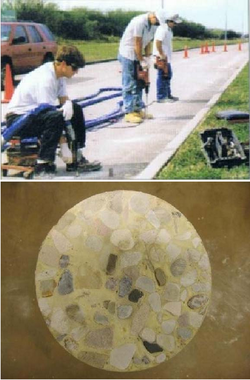Armed with that philosophic perspective and the need to make sense of an intimidating array of information in preparation for the LEED® Accredited Professional (AP) exam later this year, Steve signed up for the “Building Green with LEED” course offered this spring at NAIT.
NAIT is one of only eight to 10 post secondary institutions in Canada approved by the Canada Green Building Council to offer the course. Two years ago, the institute had identified that sustainable building techniques and alternate energy technologies are leading-edge industry practices. These emerging fields dovetail exactly with NAIT’s mission.
“We like to develop or facilitate the development of leading edge courses and programs as we are a technology-based Institute. We knew there would be a big demand for this course, given what we were hearing from industry, so we approached the CaGBC and worked with them to ensure both their needs and our students' needs would be met by offering this course,” said Laurie Halldorson, NAIT’s Continuing Education Manager.
Through instructor Stephani Carter of EcoAmmo, the 36-hour course offers case studies, field trips and guest speakers to give students a working knowledge of the CaGBC LEED® Canada for New Construction Rating System 1.0. Key focuses include sustainable site development, water savings, energy efficiency, materials selection and indoor environmental quality. The course is offered Saturdays and evenings to accommodate working professionals.
“The course really gave me a good handle on the specific aspects of the LEED-NC system. In particular, it helped tremendously in understanding the reference guide,” said Martin. “Going through the reference guide on your own is like being handed a telephone book. It’s overwhelming. The NAIT course really clarified specifically what to study and how to use the guide.”
In fact, with the popularity of the spring course and the impending Dec. 31, 2009 deadline for writing either the LEED®Canada NC exam or the LEED® Canada CI exam, NAIT dramatically increased the number of seats available for the course that begins in October – and the Oct. 13 Edmonton class is almost full.
“There is huge demand for this course. People are racing the clock to get their AP designations,” said Halldorson.
NAIT’s Calgary location is offering the same course (ARC50) to Calgary professionals this fall starting Oct. 6. The course runs a combination of Tuesday and Wednesday nights with some Saturday classes. Check the NAIT website for the exact combination of dates. There will even be a few Edmonton and Calgary class times linked together via video conference. For more information, e-mail [email protected] or call NAIT at 1-780-471-6248 to register.

 RSS Feed
RSS Feed